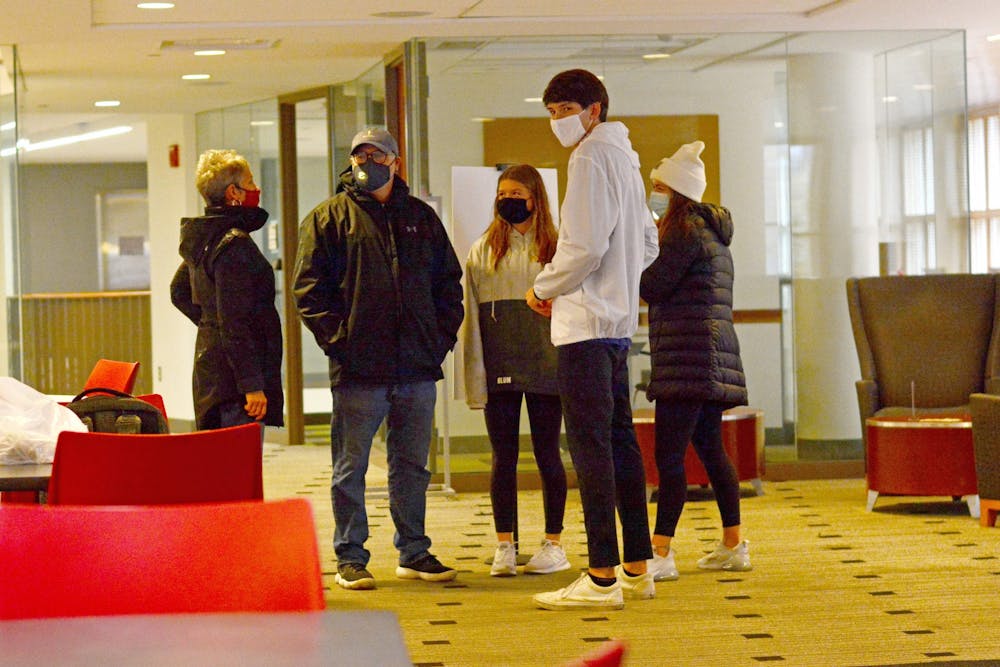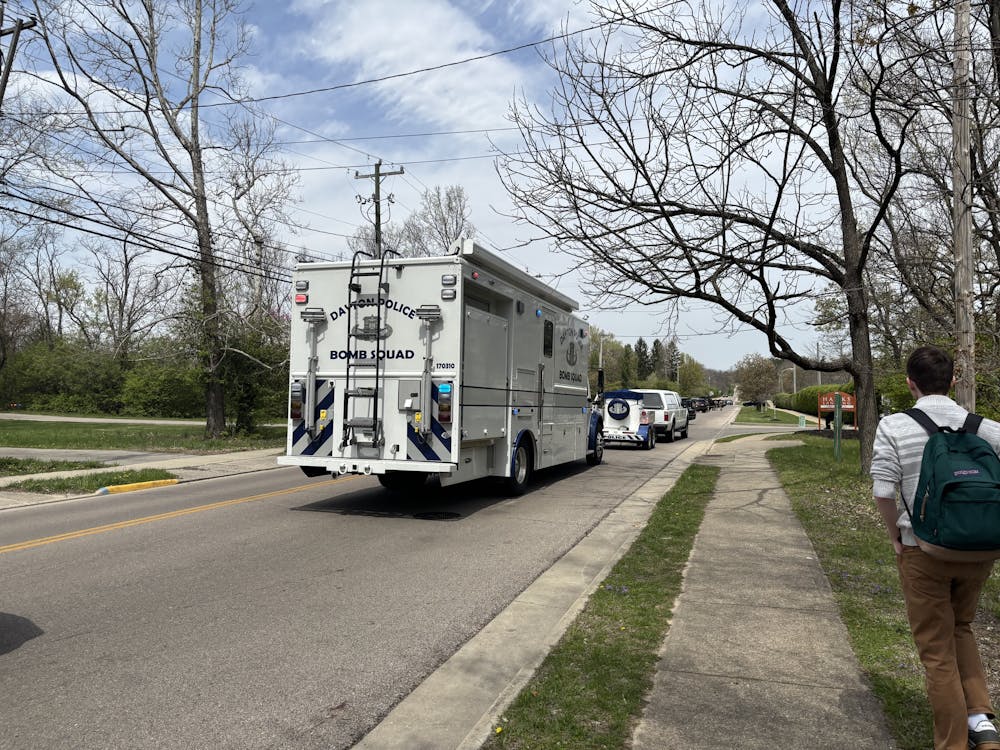In a normal year, Miami University welcomes 50,000 prospective students and family members to the Oxford campus for tours and admissions events. This semester, Andrew Boehm, associate director of admissions, said they might not top 2,000.
To follow the CDC’s guidelines for COVID-19 with only 70 tour guides – down from 150 last semester – the admissions office opted to provide one-on-one tours to prospective high school seniors and two guests only. The tour route is simplified, and visitors are not allowed inside buildings on campus.
In mid-September, the admissions office tested the one-on-one tour format with high school seniors who attended the virtual summer scholars program. After a week of tours with mostly positive feedback, the office invited seniors with demonstrated interest to sign up.
Anna Taylor, a prospective student from St. Louis, MO, enjoyed her one-on-one tour experience but had some concerns. As a potential computer science major, Taylor relied on a friend and current student to show her the College of Engineering and Computing building.
“I think, obviously, we made do for sure, [but] I think if you don’t have [a current student] it is definitely a different experience,” Taylor said.
Bethany Perkins, director of admissions at Miami, said she expected backlash following the decision to get rid of the indoor portions of campus tours.
“We anticipated that we would hear a lot more concern with not being able to go into the buildings,” Perkins said. “But really, our visitors want to be safe, too. They understand some of the restrictions right now, and they were just happy to be on campus.”
In March, Boehm’s team of tour guides and managers filmed a series of videos to temporarily replace in-person visits. Eight months later, information sessions are still online, while supplemental resources and promotional materials are being sent to students through email and post.
When Taylor attended a virtual tour in April, she described it as a “general overview.”
Taylor’s only formal college visit during the pandemic has been Miami, and she compared the experience to her tour at a different college last fall.
“[Last fall] I got to see the type of people that wanted to go to the school and that were interested, people that were on my tour, all of the different tour guides, and people [at the school] and what kind of personalities they have,” Taylor said. “I think it was good to see because it was a good overall representation of kids they bring, where at Miami, although my tour guide was so sweet, it was only one person.”
But not every university is running tours the same way as Miami. Boehm said Ohio State University isn’t offering tours at all, while the University of Cincinnati has a similar tour structure to Miami. The University of Toledo is welcoming up to 10 prospective students per tour group.
Enjoy what you're reading?
Signup for our newsletter
Kate Reagan, a first-year sports leadership and management major, emphasized the impact Miami’s tour and information session had on her college decision last spring.
“The presentation was more personable,” Reagan said. “The people there just felt so personable. Everything felt like there for you. It wasn’t like, ‘This is our school, this is what we’re about,’ it was like, ‘Hi, welcome, we want to show you, we are proud this is Miami.’”
Throughout her day at Miami, Reagan met several people important to Miami’s culture, including professors she currently has and President Greg Crawford.
“I think the thing that made me really like Miami was ... I got to see what classes I could take already and how my major would be formatted,” Reagan said. “That was the most specific [university] that I went to that spoke to my major. That’s what I liked; the program was just so good. I was between [two schools] and basically my final was like, what’s a better program?”
Sophomore tour guide Drew Stein works to make his one-on-one tours as engaging as he can. Stein said that the tour has also been condensed to 30 to 45 minutes, beginning at Shriver, continuing to the Sundial, to the Seal, to the Cook Field area and then back to Shriver.
With a limited amount of time to spend with prospective students, Stein said he focuses on making it a more personalized experience.
“The first thing I ask is their personal major, where they’re from, what they’re interested in — make it as personal as possible,” Stein said. “If they’re a business major, I will only talk about [the Farmer School of Business]. I won’t talk about the College of Arts and Science, I’ll just focus on making it all about their interest and what is best for them to know about Miami.”




